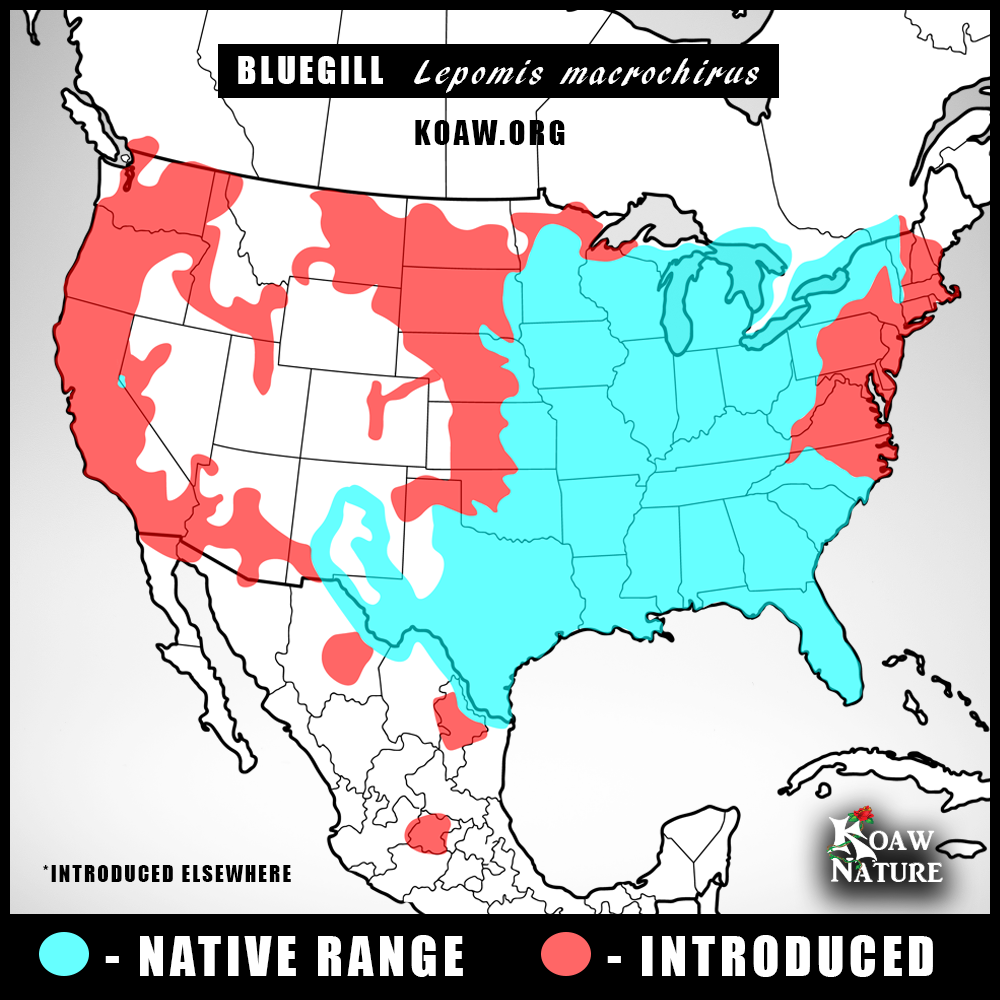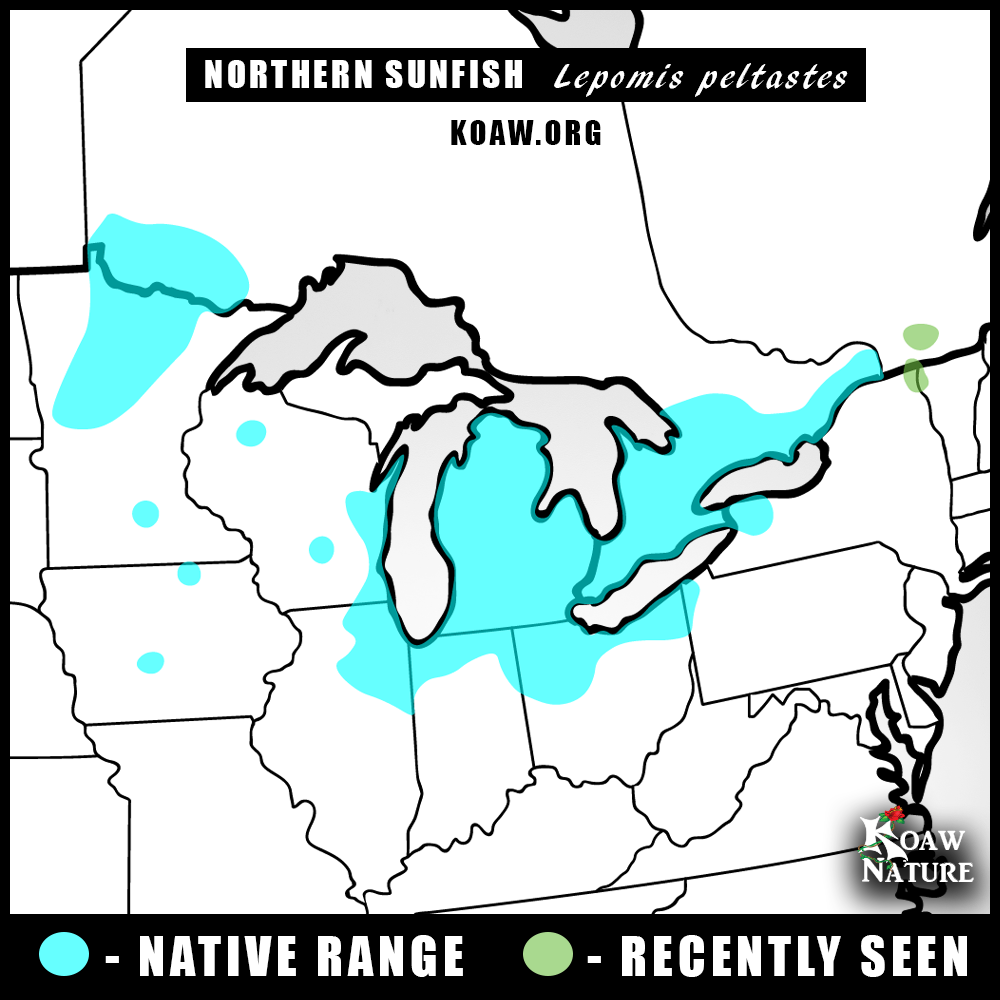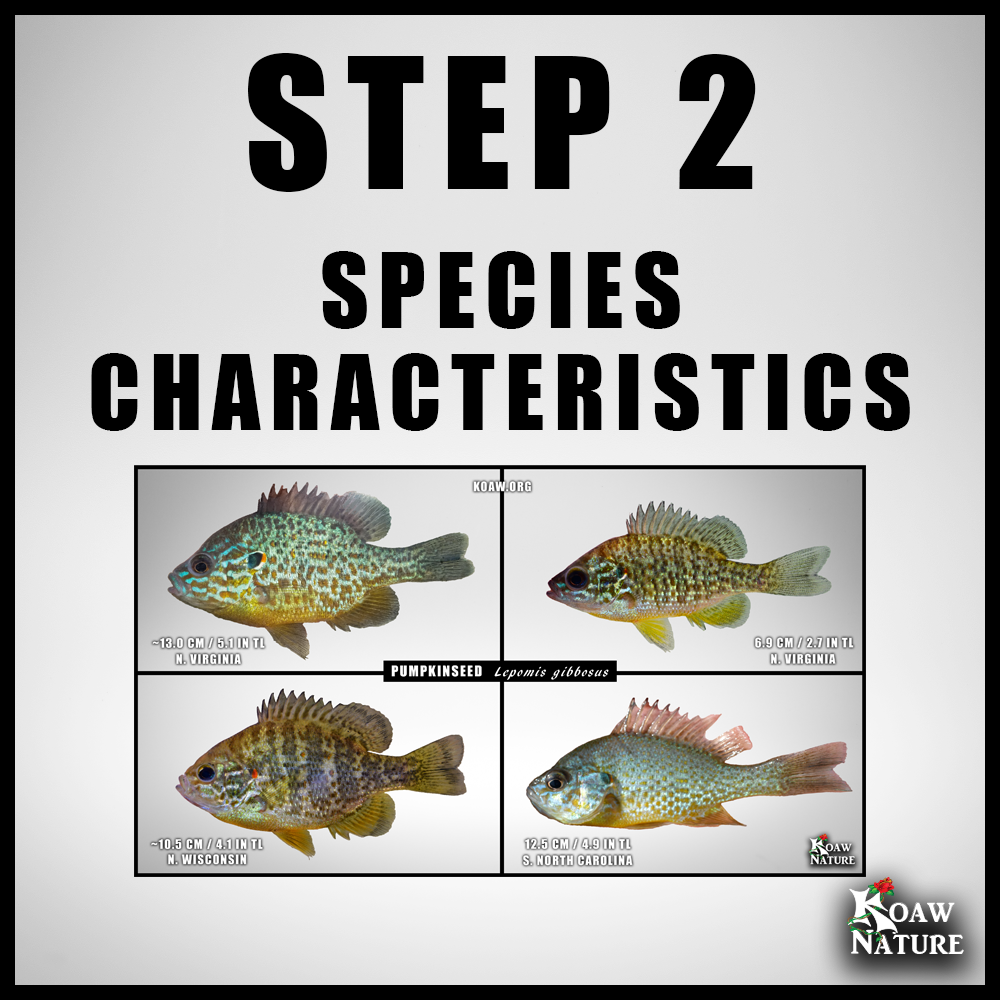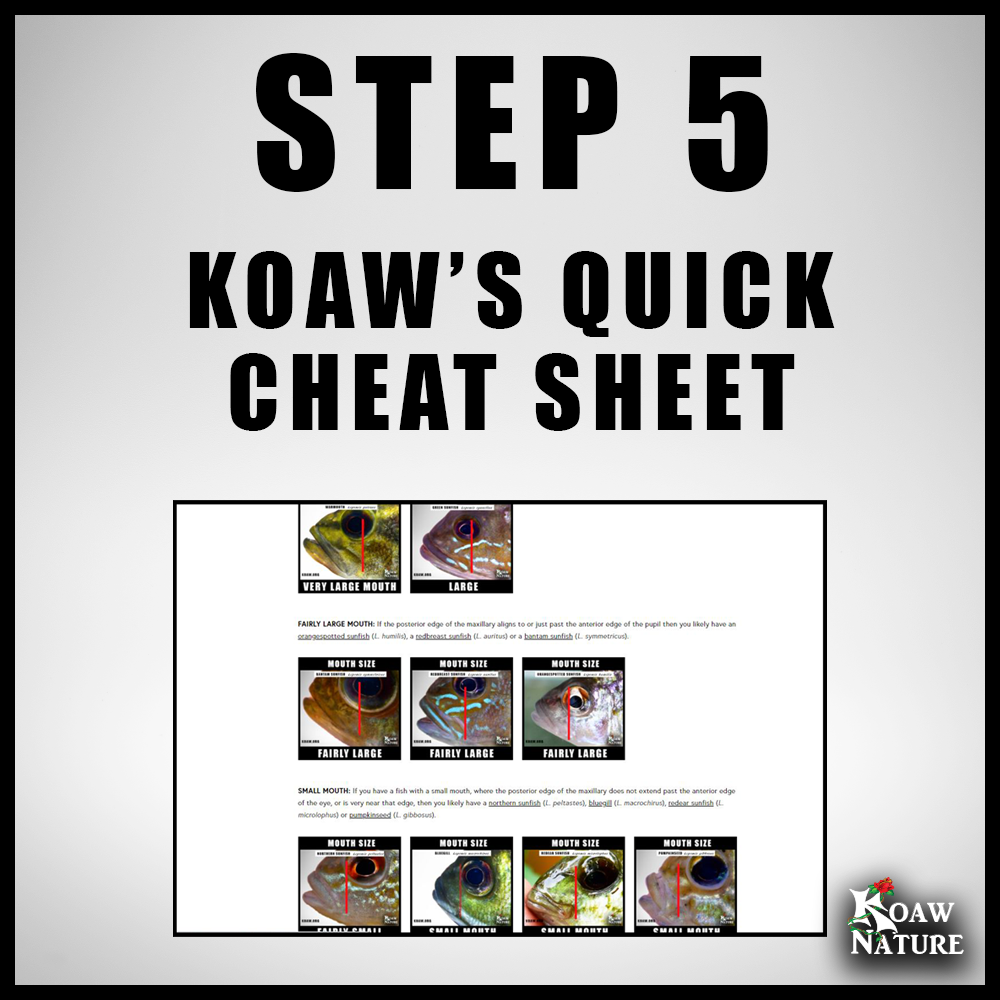By Koaw - November, 2020
STEP 4: You’ve already captured your sunfish and you have your photographs (from STEP 3). Now you should make a list of all possible sunfishes that exist in the water where you retrieved your specimen as well as nearby connected waters, or waters that are attached via streams, rivers, and canals. A 25 mile/40 kilometer radius search area is good to start with.
This step is essential if you are attempting to ID hybrids.
Don’t know what species are in your waters? Try out these sources:
1) Check out the range maps below that I’ve created to quickly show you the main regions in North America where all sunfishes are located. (Click on a map to enlarge.)
2) Use the iNaturalist.org database that we covered in STEP 2. This will give you the opportunity to see actual photos of observations in nearby waters.
3) Go to your local state/government fish and wildlife department’s website and search for the body of water where you caught your fish. Often a small summary of species is listed under the area describing the quality of fishing.
You may also try searching for the sections titled “Where to Fish” or “List of Lakes and Rivers.” More often than not, a fisheries biologist or wildlife management official had done a survey on that body of water by means of electrofishing. After a survey is completed, the biologist will write a report and submit the list of species caught, abundances, etc.; all that information should be readily available to the public (because it’s your tax money and fishing-license fees that are paying for it.)
I also suggest checking the stocking reports that should also be publicly available if done by a government fish and wildlife agency. Sometimes these are tricky to track down—but give it a try!
After you have a list of some possible species in your waters. It’s time to do the final analysis in STEP 5!
















